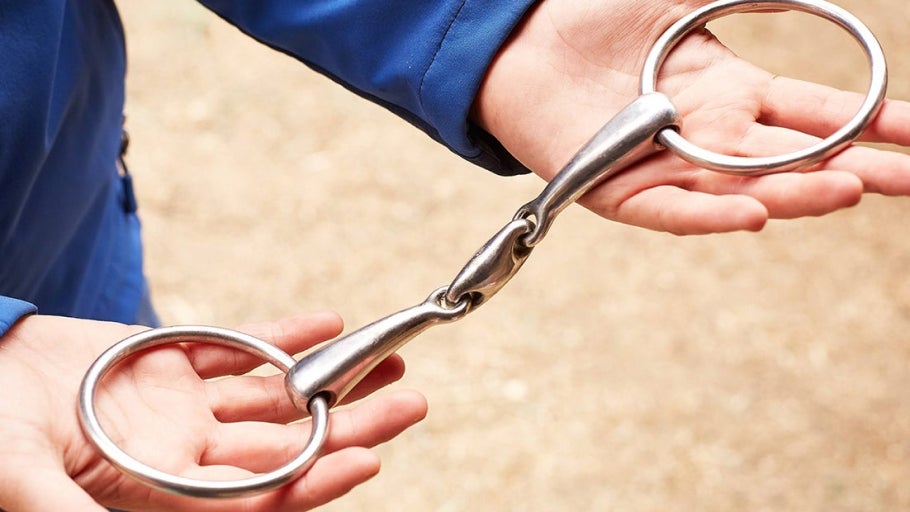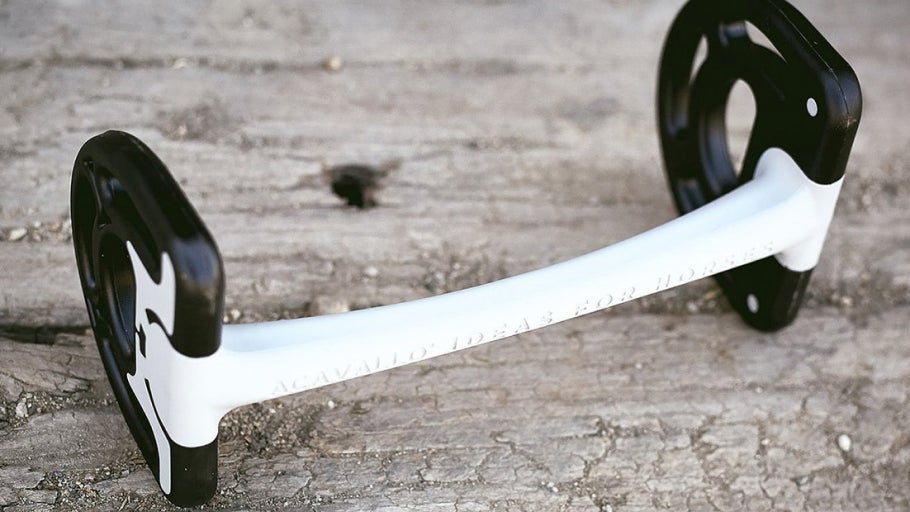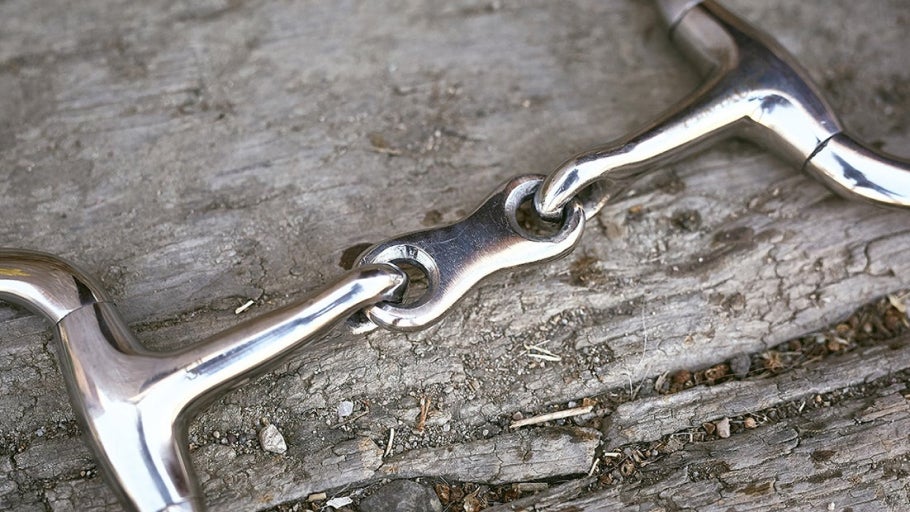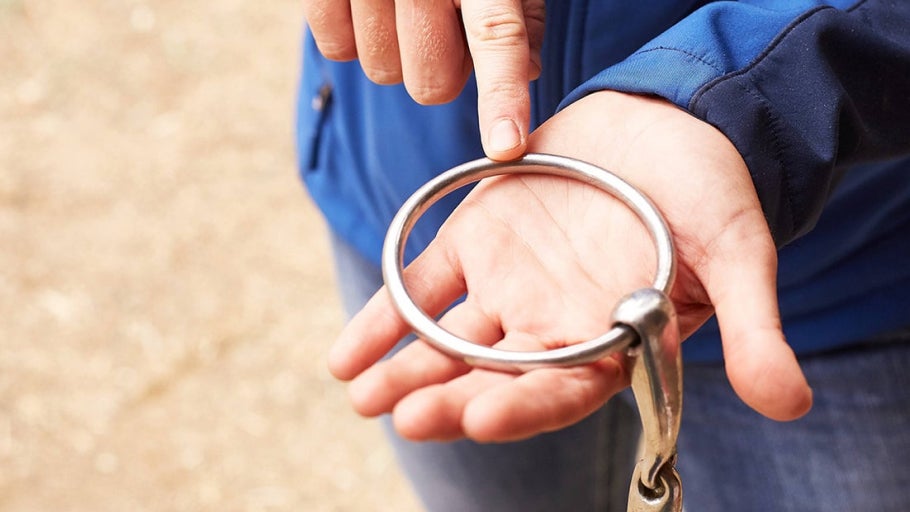
Horse Show Legal Bits for Dressage, Hunter-Jumpers, & Eventing
It is imperative to double-check that your competition tack is allowed in your specific discipline and show. After all, no one wants to be disqualified simply because their bit does not comply with show regulations! Investing the time into finding a show legal bit that works for your horse is worth it, so you both can enter the event with more peace of mind. The bit is used to communicate with your horse through hand aids, making it a very important piece of equipment indeed.
The United States Equestrian Federation (USEF) and International Equestrian Federation (FEI) have created specific rules regarding bits and tack that are allowed in competition. Although these rules can change from year to year, we have compiled a general guideline and list of show legal bits that can be used for dressage, hunters or jumpers, and eventing. When in doubt, it is always a good idea to consult the USEF or FEI handbook!
Dressage-Legal Bits
USEF and FEI have very strict guidelines for dressage-legal bits.
- Only smooth mouthpieces are legal; therefore, any twists or alterations along the bars are forbidden.
- The mouthpiece's diameter, measured at the rings or cheeks of the mouthpiece, must be a minimum of 10 mm for snaffles and 12 mm for curbs in USEF competitions. The exception is ponies, who may have a diameter of less than 10 mm. For FEI, snaffles must have a mouthpiece diameter minimum of 12 mm for horses and 10 mm for ponies.
- Mouthpieces with more than one rolling part are prohibited.
- The center link in a double-jointed snaffle must be smooth and curved on all surfaces as in a lozenge-shaped link.
- Dr. Bristol and French link bits are forbidden.
- Leather or leather covered bits are prohibited.
- Bits made out of rubber or synthetic materials are allowed.
- Ports or tongue grooves are allowed if they are wider than 30 mm and are no higher than 30 mm.
- Bit guards are forbidden in recognized dressage competitions and in three-day events.
- All loose-ring, D-ring, eggbutt, or hanging cheek rings are permitted as cheekpieces unless otherwise specified in the USEF Dressage Rules Handbook.
- The upper cheek of a hanging cheek (baucher) snaffle (measured from the top of the mouthpiece to the top of the upper cheek) may not exceed seven centimeters.
- D-ring cheekpieces are not allowed as a bridoon in a double bridle.
- See all legal bits in the USEF Dressage Rules Handbook.
In straight dressage, Training through Second Level is required to use a smooth snaffle bit. Third and Fourth Levels allow the rider to choose to ride in a snaffle or double bridle. However, FEI levels require the rider to use a double-bridle. In eventing dressage, Starter/Intro through Intermediate/3* is required to use a smooth snaffle. Advanced/4* and 5* competitors can choose whether to use a snaffle or double bridle.
Hunter-Legal Bits
Hunter competitions have their own set of rules on which bits are show legal.
- Snaffles, pelhams, and full-cheek bridles, all with cavesson nosebands, are required.
- Judges may penalize, but may not eliminate, a horse or pony that competes in an unconventional snaffle, pelham, or full-cheek bridle. These include hunter gags and kimberwicks.
- Judges must eliminate horses or ponies that compete in illegal bits or nosebands. Illegal bits include, but are not limited to: three-ring gags, gags, etcetera. Illegal nosebands include, but are not limited to: drop, flash, and figure-eight nosebands.
- When using a curb chain with a leverage bit, the chain must be made out of loose links or joints. It must lie smoothly against the jaw and may be wrapped by or inserted into a cover for comfort. They may not be used if they have wire, metal, rawhide, metal "keepers," or any other substance except for an attachment of the curb chain to the bit.
- See all rules in the USEF Hunter Division Rulebook.
Jumper-Legal Bits
USEF has no written rules regarding "legal" and "illegal" bits for jumpers.
As jumper competitions are based on speed/time and faults, which bit works best is dependent upon each individual rider and horse. We highly recommend consulting an experienced trainer to better understand how your bit acts in accordance with your equine.
USEF does have some notes in the Jumper Division Rulebook regarding curb straps/chains, draw reins, and martingales:
- When using a curb with any leverage bit, it must be constructed of loose links, joints, and/or lie smooth against the jaw of the horse and be free of twists, sharp objects, or anything inhumane.
- A curb may not be used in conjunction with wire, metal, rawhide, metal “keepers”, or any other substance except for attachment of curb to the bit.
- Draw reins and German martingales may only be used in a conventional manner when schooling or in classes with no prize money that are offered at 1.20m or below.
- No other headset devices (chambon, etc.) are permitted in any class. Draw reins and German martingales are not permitted in age-restricted classes. Ponies may not be ridden by a Junior in draw reins or German martingales at any time.
- Cable or metal tie-downs are prohibited for use on horses and ponies.
Eventing-Legal Bits
USEF has some written rules regarding "legal" and "illegal" bits for eventers.
Any single or double-jointed cable bits are illegal, as they may cause pinching of the tongue or cheeks.
For Dressage tests:
- A double bridle with cavesson noseband, i.e. bradoon and curb bits with curb chain (made of metal, leather, or a combination), is permitted for some tests. The cover for the curb chain can be made of leather, rubber, or sheepskin.
- Bradoon and curb must be made of metal or rigid plastic and may be covered with rubber/latex (flexible rubber bridoons and/or curbs are not allowed).
- The lever arm of the curb bit is limited to 10 cm (length below the mouthpiece). The upper cheek must not be longer than the lower cheek.
- A rounded snaffle bit made of metal, leather, rubber, or plastic material is permitted for all tests and may be covered with rubber/latex.
- USEF: Dr. Bristol is permitted for national eventing competitions FEI: Dr. Bristol is NOT allowed for the Eventing Dressage test.
- USEF: A neck strap or pommel strap may be used. The strap must be made primarily of leather. FEI: Loose neck strap, martingales, bit guards, any kind of gadgets (such as bearing, side, running, or balancing reins, etc.), reins with any loops or hand attachments are, under penalty of elimination, strictly forbidden.
For Cross-Country and Jumping Tests:
- USEF: Gags, hackamores, and other unconventional bits are allowed. FEI: For Cross Country, hackamores must be used with a bit. The maximum length of the shank is 24 cm, measured in a straight line from the middle of the higher ring to the middle of the lower ring.
- Only unrestricted running martingales with rein stops or Irish martingales are allowed.
- Exception: U-shaped bit converters may be used so that a bit designed for use with two reins may be controlled with a single rein.
See all permitted bits here, then see division specifics in the USEF Eventing Division Rulebook.
Closing Thoughts
Whenever entering a competition, be sure to check that your bit fits the requirements for your discipline. If you are ever unsure whether your bit is legal, you should check with show management prior to competing. Rules are always being changed, so staying up-to-date with USEF and FEI regulations will keep you informed and show-ready!
For more information on every aspect of bits, please check out our informational guides below; they will help you better understand the comprehensive effect of your bit's makeup and how it communicates with your horse. It is obviously helpful to research what you are putting in your horse's mouth before getting behind the reins! If you need more assistance on picking out the right bit for your discipline, please contact us at info@ridingwarehouse.com or by calling 1-800-620-9145. Happy riding!








